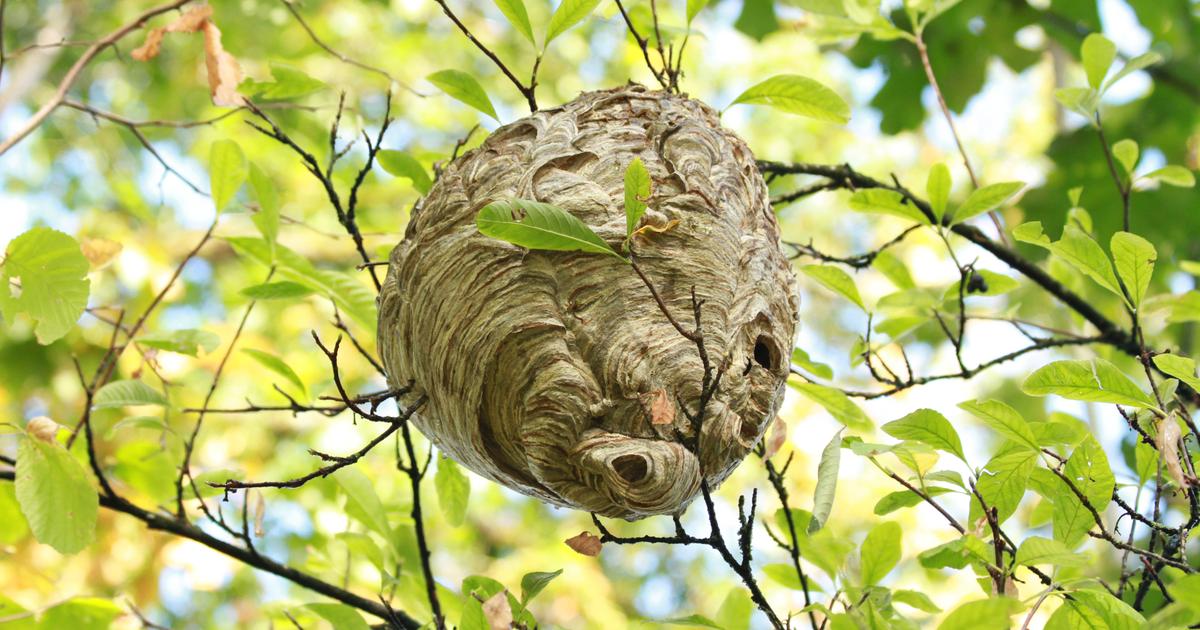As soon as spring arrives, the garden becomes a living space where we like to get together.
Unfortunately, it is often invaded by unwanted guests:
bees, hornets and wasps
.
While their beneficial contribution to pollination is undeniable, the bites of these flying insects can be dangerous, particularly for children and people with allergies.
It also happens that behind this conflicting cohabitation lies the presence of a nest.
To discover
What to plant, sow or harvest in March?
How to locate and recognize a nest?
The honeycomb
Honeycomb installed in the cavity of a tree.
VERA_KUTTELVASEROVA_STUCHELOVA / stock.adobe.com
Also called
a bee swarm
, it is made of wax cakes, oriented vertically.
The nest structure is rarely visible from the outside, as bees like to reside in cavities such as tree hollows or wall cracks.
The wasp nest
Wasp nest under the roof of a house.
stock.adobe.com
Light gray or brown in color, it
is composed of cellulose
that insects obtain by transforming wood chips into pulp using their saliva.
It happens more rarely that wasps use mud to make their nest.
Oval in shape, it can measure up to 30 cm.
You will find it in various places like gutters, trees, and sometimes even in the ground.
The hornet's nest
Asian hornets nest.
Ivan Vieito Garcia / IVÃ N VIEITO GARCÃ A - stock.adobe.com
Just like the wasp nest,
the hornet nest
is made from cellulose.
However, it is distinguished by its more rounded shape and its larger size: up to 40 cm for the nest of European hornets, compared to 70 cm for that of Asian hornets.
The former tend to prefer rural areas, while the latter are more often observed in urban areas.
Asian hornets represent a real threat to biodiversity, because they are formidable predators for most pollinating insects.
In what cases should the nest be destroyed?
If the nest is at the bottom of your garden and does not pose a threat, you can leave it there.
However, if its location creates
a risk of stings
for yourself or others, it is recommended to destroy it.
Regardless of the species concerned, firefighters will only intervene if the nest represents an immediate danger or if it is located in a risky environment (public road, nursery or school).
If you are faced with
a bee nest
, the best solution is to contact a beekeeper.
He will be responsible for recovering it to integrate it into his own apiary.
For a wasp or hornet nest, you will need
to call a company specializing
in nest removal.
She will destroy it safely.
What you absolutely should not do
Do not try to destroy the nest yourself.
Feeling threatened, insects may attack you.
Avoid sudden movements near the nest.
These actions could scare the hymenoptera and trigger an attack.
Do not obstruct the swarm's entrance so as not to cause the formation of a new nest.
Avoid leaving food near the nest so as not to further attract insects.
How much does the intervention of a professional cost?
The intervention of a beekeeper is generally free.
The prices charged by private companies, on the other hand, vary
between €90 and €200
on average.
When the nest is located in public space, the destruction costs are covered by the town hall.
Finally, if you are a tenant, article 18 of the law of December 23, 1986 provides for a distribution of costs between you and the owner.
You will have to take responsibility for the products used, while the owner will bear the cost of labor.

